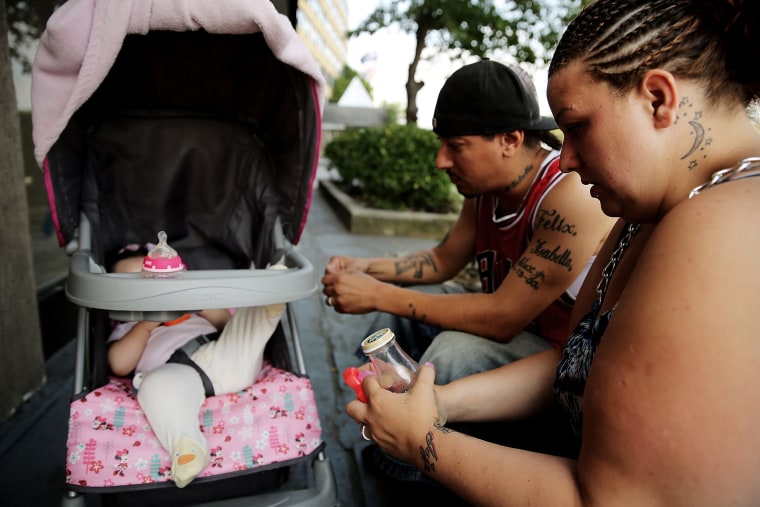The newest Census data on poverty and inequality, released on Tuesday, did not include very many big surprises. The gap between the top and bottom income percentiles did not change significantly from 2012 to 2013, according to the agency's annual report. The official poverty rate went down from 15% to 14.5%, but the absolute number of people in poverty remained about the same. Median household income for the under-65 crowd ticked up very slightly, by about 0.4%.
In other words, the story of American poverty and inequality in 2013 is the same story that's been told for years--even decades. The number of people in poverty is still elevated relative to where it was in the 1970's. Inequality is still on a long-term upward trajectory. And household earnings for most Americans remain largely stuck in place.
"We've still got a large, ongoing crisis," said Stephen Pimpare, a professor in Columbia University's School of Social Work. "And it's a crisis not just of economics and the Great Recession, which is the way a lot of people are going to talk about it. Because while it was true that poverty is greater than prior to the Great Recession, poverty is where it was in the early 1990's and early 1980's."
Similarly, while it's true that household earnings in 2013 haven't recovered to their pre-recession levels, that doesn't quite tell the full story. As it turns out, median household income even remains below where it stood in the year 2000, two recessions ago.
"We basically have 13 to 14 years of lost incomes for the most part, and that's the bigger picture," said Larry Mishel, president of the left-leaning Economic Policy Institute, during a conference call with reporters.
The rise in median income which took place between 2012 and 2013 was not "statistically significant," he went on.
"We're very slowly digging ourselves out of a very deep hole. We're using a coffee cup to dig ourselves out of a deep hole," he said. "Families are just getting a taste of what a recovery looks like."
While the Census numbers released on Tuesday do paint a rough picture of poverty, income and inequality in the United States, there's a lot missing from the story. The official poverty measure used in this week's report is based on mid-20th century data regarding household consumption, making it a dubious measure of poverty in the modern United States. A more up-to-date picture won't be available until later in the autumn, when the Census issues its report on the Supplemental Poverty Measure, a metric that includes more sophisticated data on consumer expenditures and a fuller accounting of the social safety net benefits that households receive.
The report also elides a full accounting of economic inequality in the United States. The income inequality measurement does not capture overall household wealth, including gains from capital and stock dividends. Capital gains have been found to be a major driver of inequality, as the top 1% tend to accrue a disproportionate share of the wealth.
